Can Alkaline Batteries Contain Mercury
Alkaline batteries are ubiquitous in households and electronic devices, powering everything from remote controls to flashlights. A common question many consumers ask is whether alkaline batteries contain mercury. Understanding this is important not only for safety and disposal practices but also for assessing environmental impact. Mercury has historically been used in small amounts in batteries to prevent internal corrosion, but modern regulations and technology have drastically reduced or eliminated its presence. To properly assess battery performance, it is also crucial to understand Amp Hours, as this metric indicates how much energy a battery can store and deliver, influencing both efficiency and safe usage. In this comprehensive guide, we’ll explore the history of mercury in alkaline batteries, its current status, and how Amp Hours relate to battery capacity and usage.
- Understanding Amp Hours in Alkaline Batteries
- Mercury in Alkaline Batteries and Amp Hours
- Comparing Amp Hours of Mercury and Mercury-Free Alkaline Batteries
- Amp Hours and Battery Safety
- Amp Hours in High-Drain Devices
- Amp Hours and Environmental Considerations
- Amp Hours and Consumer Choice
- Amp Hours in Special Applications
- Final Thoughts Amp Hours and Mercury-Free Batteries
Understanding Amp Hours in Alkaline Batteries
Amp Hours (Ah) measure the total charge a battery can provide over a period of time. For example, a standard AA alkaline battery typically delivers 2,500–3,000 mAh at 1.5V, which translates into 2.5–3Ah. Understanding Amp Hours is crucial for comparing battery performance, especially when considering long-term usage or replacing batteries in devices that draw high current.
Why Amp Hours Matter
The higher the Amp Hours, the longer a battery can sustain a load. For example, a remote control draws very little current, so even a low-Ah battery may last months. Conversely, high-drain devices like digital cameras will deplete batteries faster, making Amp Hours a critical metric for choosing the right battery.
Real-World Implications
Even if a battery is mercury-free, its Amp Hours rating determines usability. A high-Ah battery can sustain longer runtimes and is generally more cost-effective over time.
Mercury in Alkaline Batteries and Amp Hours
Historically, small amounts of mercury were added to alkaline batteries to prevent corrosion and extend shelf life.
How Mercury Affected Battery Performance
Mercury helped maintain internal conductivity and minimized leakage. However, it did not significantly increase Amp Hours. Modern alkaline batteries achieve similar or better Amp Hours without using mercury, thanks to advances in chemistry and manufacturing.
Environmental and Regulatory Changes
Mercury has been largely phased out of consumer batteries in many countries, including the US and EU, under regulations like the Mercury-Containing and Rechargeable Battery Management Act. As a result, most modern alkaline batteries are labeled mercury-free but maintain comparable Amp Hours to older designs.
>>See also AGM vs Flooded Battery, Comprehensive Guide
Comparing Amp Hours of Mercury and Mercury-Free Alkaline Batteries
When evaluating battery performance, Amp Hours are the most relevant metric.
Historical Mercury-Containing Batteries
Older mercury-containing alkaline batteries offered reliable performance but were limited by chemical and mechanical design. Their Amp Hours ranged from 2.3–2.8Ah for AA cells.
Modern Mercury-Free Batteries
Newer mercury-free alkaline batteries can achieve 2.5–3Ah, demonstrating that eliminating mercury does not compromise energy storage.
Practical Takeaways
Consumers can safely choose mercury-free batteries without sacrificing runtime, as Amp Hours remain consistent.
H2: Amp Hours and Battery Safety
Safety is always a concern when handling any type of battery.
Proper Usage
Always follow manufacturer guidelines for device compatibility. Amp Hours indicate how much load a battery can safely handle. Exceeding the recommended current can reduce battery life or cause leakage.
Storage and Disposal
Store batteries in a cool, dry place. Mercury-free alkaline batteries are safer to dispose of, but recycling is still recommended. Amp Hours determine how much energy remains in a discarded battery, which can influence environmental impact if improperly disposed.
Amp Hours in High-Drain Devices
Some electronics draw more current than others. Amp Hours help predict how long a battery will last in high-drain applications.
Digital Cameras and Gaming Controllers
Devices like cameras and gaming controllers rapidly deplete Amp Hours. Using batteries with higher Ah ensures longer usage between replacements.
Flashlights and Emergency Equipment
Even in low-drain applications, understanding Amp Hours allows users to estimate battery life accurately, ensuring devices remain operational when needed.
Mercury Content Myths
Many people believe that any alkaline battery might contain dangerous mercury.
Regulatory Standards
Current regulations severely restrict mercury use. Most commercially available alkaline batteries are labeled as mercury-free, and their Amp Hours are comparable to older models that contained mercury.
Safety Perspective
Even if trace mercury were present, the levels would be extremely low. Amp Hours, not mercury content, are the primary factor influencing how long a battery can power a device safely.
H2: Amp Hours and Environmental Considerations
Battery disposal and environmental impact are strongly tied to Amp Hours.
Energy Efficiency
High-Ah batteries store more energy per cell, reducing the number of batteries needed over time and minimizing waste.
Mercury-Free Benefits
Eliminating mercury further reduces environmental risk. Modern high-Amp Hours alkaline batteries combine energy efficiency with eco-friendliness.
Amp Hours and Consumer Choice
Consumers should prioritize Amp Hours when selecting batteries rather than focusing solely on mercury content.
Cost Efficiency
High-Amp Hours batteries may cost slightly more upfront but deliver longer runtimes, reducing total consumption and expense.
Device Compatibility
Check Amp Hours ratings against device requirements to ensure optimal performance and avoid early depletion.
>>See also Solar Panel Burn Marks Damage Assessment and Repair Options
H2: Amp Hours in Special Applications
Emergency Kits
Mercury-free batteries with high Amp Hours are ideal for emergency kits, providing reliable power for flashlights, radios, and other essential devices.
Remote Locations
In remote areas, where replacement is inconvenient, batteries with higher Amp Hours maximize operational time.
Educational and DIY Projects
Amp Hours help hobbyists and educators understand energy storage and safe usage, reinforcing good battery practices without relying on mercury for stability.
Future of Mercury-Free Alkaline Batteries
Advances in Chemistry
Battery manufacturers continue to improve Amp Hours without mercury, achieving longer life and higher stability.
Consumer Awareness
Educating users on Amp Hours ensures better decision-making, highlighting energy storage over chemical composition concerns.
Final Thoughts: Amp Hours and Mercury-Free Batteries
In conclusion, modern alkaline batteries are largely mercury-free, complying with environmental regulations. Their Amp Hours remain on par with older mercury-containing cells, ensuring reliable performance. Understanding Amp Hours is critical for evaluating battery life, efficiency, and suitability for different devices. Choosing batteries based on Amp Hours rather than historical concerns about mercury provides a more accurate, practical measure of performance. Mercury-free alkaline batteries combined with proper storage, usage, and recycling practices deliver safe, efficient, and environmentally friendly power. Amp Hours are the true benchmark for assessing battery energy potential and real-world usability.

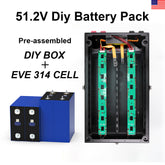

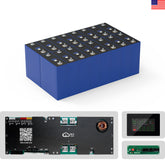

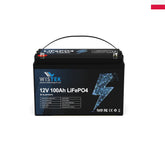
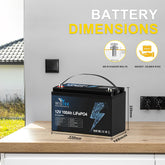

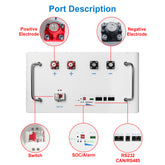
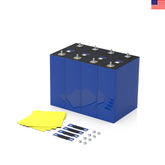
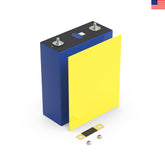
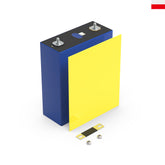

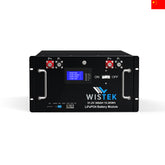
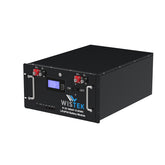
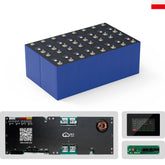








Leave a comment
All blog comments are checked prior to publishing